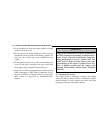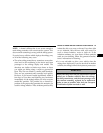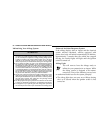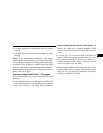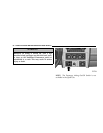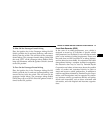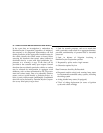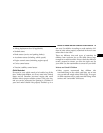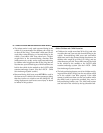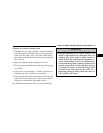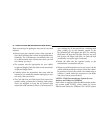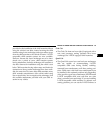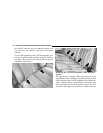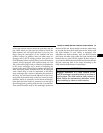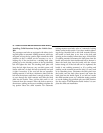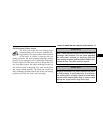
•
The infant carrier is only used rearward-facing in the
vehicle. It is recommended for children who weigh up
to about 20 lbs (9 kg). ЉConvertibleЉ child seats can be
used either rearward-facing or forward-facing in the
vehicle. Convertible child seats often have a higher
weight limit in the rearward-facing direction than
infant carriers do, so they can be used rearward-facing
by children who weigh more than 20 lbs (9 kg) but are
less than one year old. Both types of child restraints are
held in the vehicle by the seatbelt or the LATCH child
restraint anchorage system. (See the LATCH - Child
Seat Anchorage System section.)
•
Rearward-facing child seats must NEVER be used in
the front seat of a vehicle with a front passenger airbag
that does not have a switch to turn the airbag Off. An
airbag deployment could cause severe injury or death
to infants in this position.
Older Children and Child Restraints
•
Children who weigh more than 20 lbs (9 kg) and who
are older than one year can ride forward-facing in the
vehicle. Forward-facing child seats and convertible
child seats used in the forward-facing direction are for
children who weigh 20 to 40 lbs (9 to 18 kg), and are
older than one year old. These child seats are also held
in the vehicle by the seatbelt or the LATCH child
restraint anchorage system. (See the LATCH - Child
Seat Anchorage System section.)
•
The belt-positioning booster seat is for children weigh-
ing more than 40 lbs (18 kg), but who are still too small
to fit the vehicle’s seat belts properly. If the child
cannot sit with knees bent over the seat cushion while
the child’s back is against the seatback, they need a
belt-positioning booster seat. The child and booster
seat are held in the vehicle by the lap/shoulder belt.
60 THINGS TO KNOW BEFORE STARTING YOUR VEHICLE



